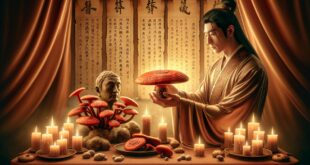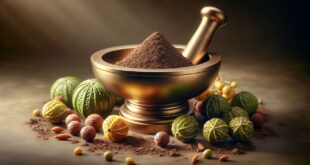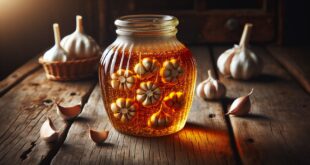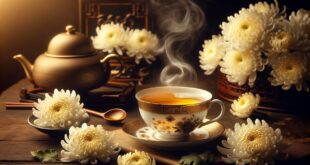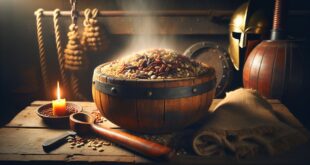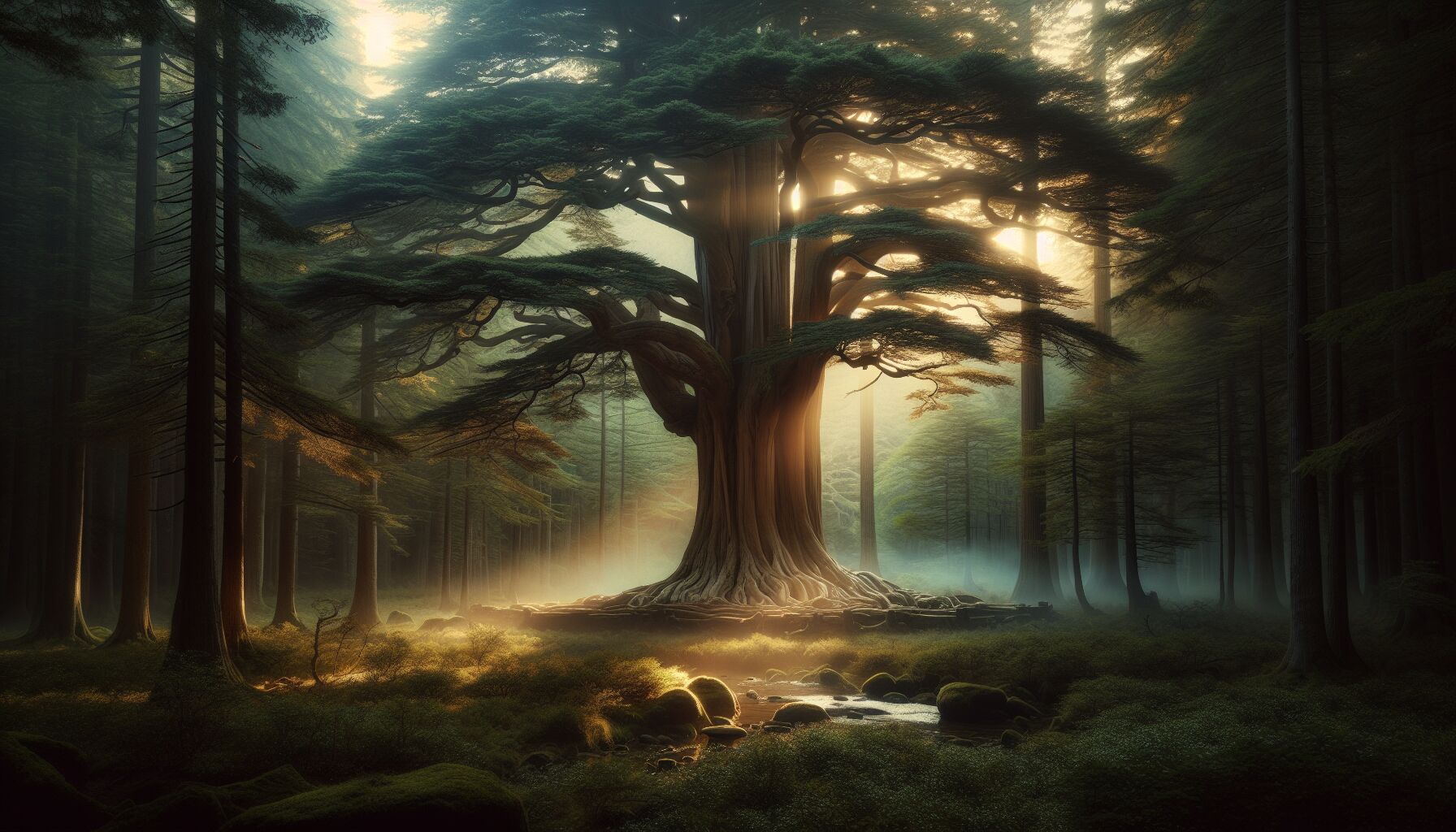 You don’t separate the medicine from the spirit. That was never the way. For many Native American traditions, healing goes hand in hand with connection—to the Earth, to the people, to what’s unseen but deeply felt. It’s not a matter of symptom suppression, but relationship restoration. You might say it’s more about tuning a living instrument than fixing a broken machine.
You don’t separate the medicine from the spirit. That was never the way. For many Native American traditions, healing goes hand in hand with connection—to the Earth, to the people, to what’s unseen but deeply felt. It’s not a matter of symptom suppression, but relationship restoration. You might say it’s more about tuning a living instrument than fixing a broken machine.
Indigenous medicine wasn’t built in a lab or distilled from corporate patents. It’s born of thousands of years of listening—listening to the body, the stars, the ache of the wind before rain. Think about that. Every remedy, every ceremony, every act of healing came from communion with the living world. It’s not superstition, it’s observation layered with reverence.
Let me explain with something simple. Say you’re standing beside a cedar tree. To some, it’s just wood and shade. But for many Native healers, cedar is a purifier—it’s burned in smudge rituals to clear emotional or spiritual heaviness. The smoke isn’t just aromatic; it’s a vehicle of intention. Western science might talk about antimicrobial effects (and yes, they’re real—Google it), but that’s only part of the story. The full meaning rests in how cedar’s spirit meets yours.
These practices weren’t abstract spirituality either. They were often structured, precise. A Diné medicine man, for example, didn’t just hand out herbs. He sang the right songs, walked the right path, told the right stories. Those details mattered—because they carried ancestral knowledge. Knowledge embedded in the rhythm of ceremony, not just the list of ingredients.
It also wasn’t just human-to-herb. It was human-to-land. The land knew what wounds needed healing—providing healing plants like sage, yarrow, or sweetgrass in precisely the place they were needed. If illness was imbalance, then nature was the tuning fork.
Here’s where things get overlooked: many of these healing practices weren’t designed to work instantly. Some took days, weeks, entire seasonal cycles. Healing was allowed to be slow, because life was allowed to be slow. There’s wisdom in that tempo. Ask yourself: when’s the last time you made space for healing without rushing toward the fix?
“As long as you keep secrets and suppress information, you are fundamentally at war with yourself.” — Bessel van der Kolk, MD
While not Native himself, van der Kolk’s insight resonates here. Traditional medicine wasn’t about suppressing symptoms—it was about surfacing truth, both physical and spiritual. Sometimes traumas weren’t treated with a pill or a leaf, but a vision quest, a sweat lodge, a night under the stars where your fears had space to speak. That’s medicine, too. Raw. Unrushed. Real.
There’s also the communal piece — you couldn’t separate the individual from the tribe. Healing one person meant healing relationships. If your body hurt, maybe your role in the community was fraying; maybe your ancestors had something to say. It’s not mystical fluff—it’s a web of cause and effect we’ve become too numb to track. We’ve let convenience replace coherence.
And then there are the helpers—elders, shamans, midwives, and herbalists who didn’t flex authority, but held space. Their power wasn’t in control but presence. These aren’t roles we just plug into a grid or schedule with a booking app. They emerge from lived experience, collective memory, and earned humility.
Curious about how herbs connect with spiritual clarity? Take tobacco. Not the mass-produced stuff loaded with chemicals—but sacred tobacco used in offerings and prayers. It’s considered a bridge between people and Creator. Improperly harvested or used without intention, it’s powerless—or even harmful. That’s why so many Native traditions emphasized ritual stewardship—it wasn’t just what you used, but how and why.
One of the common misunderstandings is the belief that traditional medicine is primitive or outdated. But newsflash: many of its teachings align with emerging research on trauma, neuroplasticity, and even gut health. The National Center for Biotechnology Information (NCBI) has published more than a few studies confirming what Indigenous healers have known for ages—plants can shift mood, alter nervous system patterns, and repair biological stress damage. Feel that irony? Science finally catching up to spirit.
“We’re more than flesh and memory. Human beings are stories wrapped in skin.” — Joy Harjo, Muscogee poet
Harjo’s words echo the entire point. Medicine comes not just in the form of tinctures and teas, but in story, breath, eye contact, and shared silence. Traditional healing practices were holistic before “holistic” was even a buzzword—and certainly before it got tacked onto overpriced wellness retreats.
So now the question returns to us—what are we healing from, really? Just inflammation, or disconnection? Just anxiety, or isolation from the Earth’s rhythms?
If you ask elders still practicing these ways, they’ll tell you: the land is still speaking, the plants are still offering. The rituals, though frayed in places, remain intact. Maybe what’s needed isn’t something new—but something remembered.
Want to see more where medicine and memory still walk together? Communities across Turtle Island continue to share and protect these teachings—from Navajo herbalists in the desert Southwest to Anishinaabe midwives stewarding birth as ceremony. Resources like the Fond du Lac Tribal and Community College or the Native Voices project by the U.S. National Library of Medicine serve as living archives.
These practices aren’t past tense. They’re seeds—in story, in ceremony, and sometimes in the garden behind your grandmother’s house. Keep listening. They’re still sprouting.
Sacred plants and their medicinal uses
Let’s talk plants—not as commodities, but as kin. In Indigenous medicine, the plant isn’t separate from the healer, the land, or the story. Healing plants carry more than alkaloids and oils; they hold relationships, responsibilities, and often, ancestral knowledge encoded not just in seed, but in ritual.
Take yarrow. Looks delicate, almost ornamental, with its feathery leaves and lace-top flowers. But don’t be fooled. This humble wildflower has been used for centuries to staunch wounds—both physical and emotional. Plains tribes would mash its leaves into a poultice to stop bleeding. But more than that, yarrow was believed to strengthen boundaries—the unseen kind. The kind you need when grief starts leaking from your chest like wind through an open window at night.
And what about sweetgrass? It’s not just braided for ceremony—it’s braided for remembrance. Burned after sage in many smudge rituals, sweetgrass is considered the plant of kindness. It calls in good spirits, calms tension. There’s a subtle geometry to it, too: first, sage clears the space, then sweetgrass fills it. Cleaning out isn’t the whole work—what you invite back in matters. This isn’t random—it’s pattern, method. Sweetgrass smells like warm bread and soft rain when it burns. That’s not poetic fluff; it’s biology and memory interweaving.
“Plants are teachers. They speak in shapes, in scents, in frequencies we’ve almost stopped noticing.” — Robin Wall Kimmerer, botanist, Potawatomi citizen
Kimmerer wasn’t just being metaphorical there. She was pointing to something concrete: every sacred plant has its own teaching style. Cedar teaches protection. Tobacco teaches respect. Sage teaches release. These aren’t just medicinal properties—they’re lessons embedded in form.
Now, tobacco—let’s pause here, because it’s often misunderstood. The sacred tobacco of many Native nations is not meant to be chain-smoked or mass manufactured. It’s given, offered. Prayers sent skyward in whispers, not plumes. Traditionally, it wasn’t inhaled—it was held to the mouth, released in breath, and carried meaning. When used with ceremony, tobacco opens a communication line between human and spirit, between asker and ancestor. Used without reverence, it loses its purpose. That’s a pattern we see too often: tools stripped from their context become commodities—hollow replicas of their original spirit.
Then there’s bear root—also called osha. Grows wild in the Rockies. Smells like pepper and resin, digs deep into poor soils. Chewed or boiled, it opens airways, wards off illness. But more than that, it’s a protector. Elders say it holds the medicine of the bear—strength, solitude, raw healing. Think about that. A root connected to the bear’s energy, shared with humans who respected that strength, not exploited it.
And don’t overlook mullein. Leafy, fuzzy, grows tall. It’s been used to line moccasins in winter, soothe sore throats, and calm lung inflammation. But it’s also considered a plant of transition. It’s one of those healing plants that shows up when you’re in between things—seasons, homes, identities. You could say it brings breath back to those who’ve been holding it in too long.
Now, let’s zoom out and stitch this together. What makes a plant sacred? Is it the chemical profile? The statistical efficacy in a clinical trial? Or is it the memory it carries, the ways communities have found balance with it for centuries?
“It’s not just what the plant does that makes it medicine. It’s also what the plant knows and how it chooses to share it.” — Lakota elder, private correspondence
That’s the deeper medicine: respect-driven reciprocity. If you ask seasoned herbalists who walk the old ways, they’ll often remind you—plants don’t just work for us. They work with us, sometimes even despite us.
There’s also the seasonal connection. Certain herbs are gathered only in late summer or after the first frost, when their energies are aligned with the cycle they serve. For example, wild mint harvested as Thunder Beings approach is considered more potent for digestive upset and clarity. Timing isn’t just convenient; it’s a matter of spiritual chemistry.
Let me be clear—this isn’t about romanticizing Indigenous medicine or projecting fantasy onto it. It’s about remembering that sacred plants carried healing long before they were bottled, branded, and parceled out in tiny wellness jars. There’s wisdom in structured ritual. There’s science in ceremony, whether peer-reviewed or passed through generations.
And yes, while science is beginning to corroborate some uses (like how sweetgrass oil has antimicrobial properties per NCBI studies), that’s not really the point. The point is: healing lives in how we approach the plants, not just whether we extract their compounds correctly.
Here’s a simple starting place: next time you use a plant—tea, tincture, or salve—pause and speak to it. Not performatively, but genuinely. Give thanks. Ask gently. Look at it in full. See if something changes in how it serves you.
Remember: ancestral knowledge doesn’t only live in scrolls or formal apprenticeships. Sometimes it stirs when your hand brushes chamomile for no reason. Or when you suddenly smell juniper and feel calmer. Or when your grandmother says “this always worked for us” without citing a study.
That’s not anecdote—it’s lineage.
So when people talk about sacred plants, maybe the real question is: are we sacred enough in how we receive them?
Preserving and revitalizing ancient knowledge
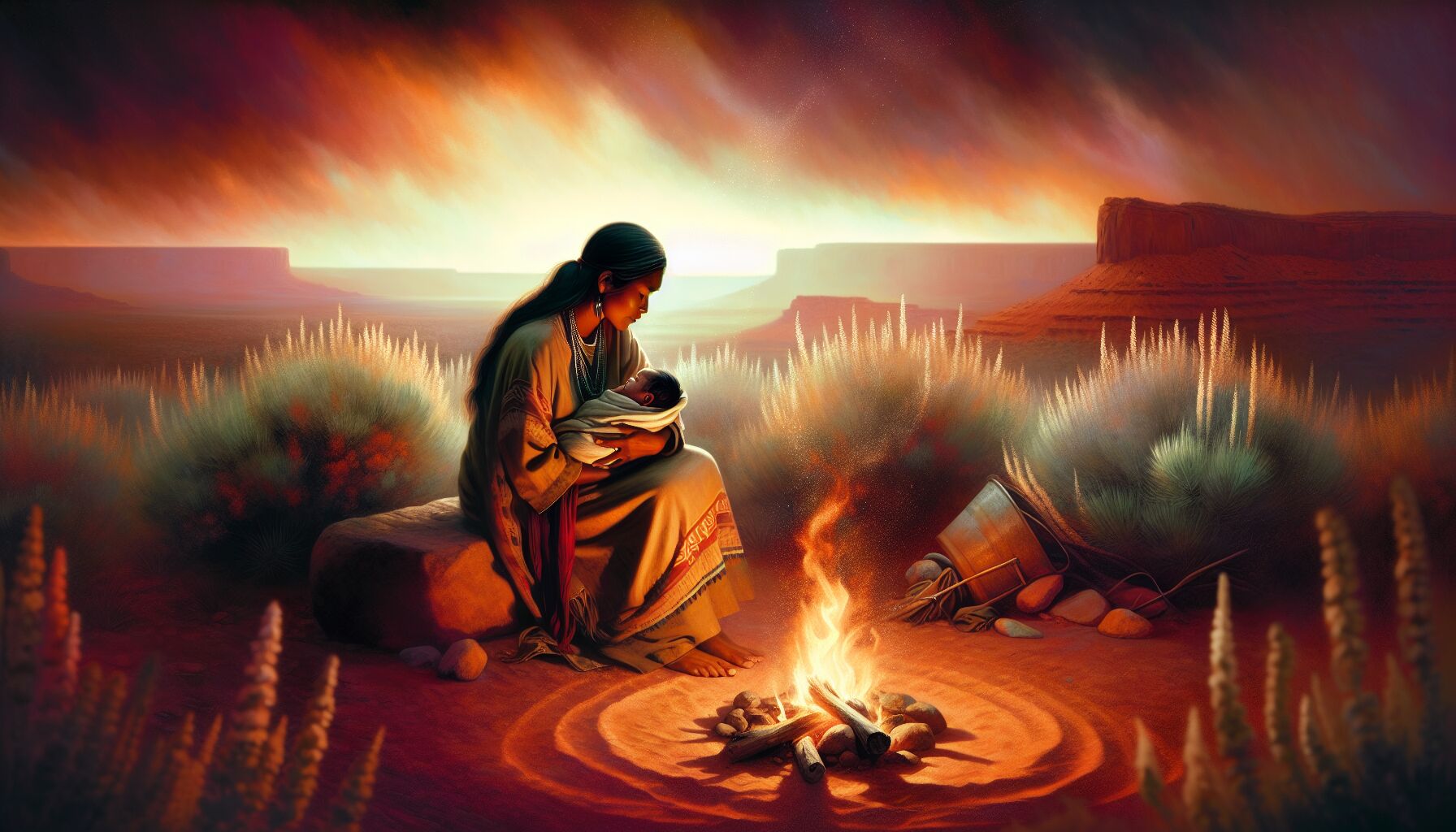 Some knowledge lives in books. Some lives in bones. And some almost disappeared.
Some knowledge lives in books. Some lives in bones. And some almost disappeared.
The story of Indigenous medicine—of healing plants speaking through cedar, sage, bear root—isn’t just a tale of survival. It’s a story about remembering. About pulling the thread of ancestral knowledge through generations, even when that thread was nearly torn.
Colonial pressure, forced assimilation, and the outlawing of sacred ceremonies did more than harm—they silenced. From the boarding school era to misappropriated “herbal wellness,” Native healing traditions were ridiculed, criminalized, and then, paradoxically, repackaged for market.
So how did the wisdom live on? Quietly, mostly. Hidden, whispered over pots of stew or while mixing salves behind the woodstove. Passed in kitchens, gardens, tobacco circles, and backwoods ceremonies. It didn’t vanish—it adapted. As Dr. David Treuer (Ojibwe author and anthropologist) once noted, “What our ancestors did was not vanish, but endure.”
Here’s the deeper truth: ancient doesn’t mean outdated. Some of the most resilient forms of healing are those born from systems that valued *relational memory*—the way a story continues not because it’s stored, but because it’s used.
And now there’s a turning.
New generations are standing up—not to “preserve” as if it’s fragile glass, but to renew, re-engage, and repopulate memory with meaning. Young Diné midwives are learning birth chants. Cherokee botanists are collecting seeds that once only grew in their grandparents’ fields. And digital oral archives like those from the National Library of Medicine’s Native Voices project are housing voices that would’ve otherwise faded.
The real work? It’s not in plastering folklore over wellness brands. It’s in relationship-building. That means supporting tribal seed banks like the Indigenous Seed Keepers Network, where ancestral food and medicine plants are being re-cultivated on Native lands. It means listening when elders speak, even when it’s inconvenient or uncomfortable.
Is there a role for non-Native folks here? Yes—but not as curators or saviors. As students. As allies grounded in respect.
One mistake we make is assuming knowledge lives in things—formulas, databases, even plant samples. But Indigenous teachings emphasize that true medicine happens *in context*. Without ceremony, without intention, even the most powerful herb is just… a plant.
Rebuilding that context means restoring relationships:
- With the land — Harvesting only when plants call. Learning weather, soil, seasonality like you do an elder’s mood.
- With language — Many medicinal teachings are language-bound. The name of a plant often tells you what it does. Lose the word, lose the key.
- With community — Healing historically wasn’t solo work. Rebuilding herbal knowledge means rebuilding kinship—a notion many Western practitioners still overlook.
There are hard truths here too. Some knowledge may never return. Some lineages have gaps that can’t be closed by books or lab work. That’s not tragedy—that’s reality. But what can be done now is to keep the work living, not static. That means asking better questions. Finding where Indigenous medicine lives today in family gardens, tribal elder programs, Native herbalists quietly honoring protocols.
It also means being aware of appropriation—knowing the line between learning from and taking over. For example, using white sage without understanding its theft and ecological endangerment isn’t “embracing ancient wisdom”—it’s erasure. We’re not entitled to every remedy. But we are called to every act of respect.
So how do practices once passed at the fire circle survive the digital age? Carefully, and on their own terms. More Native communities are reclaiming data sovereignty—deciding what gets shared and what remains private. It’s not gatekeeping; it’s guardianship.
“If you carry the medicine but share it carelessly, it stops being medicine and becomes poison.” — Hopi oral tradition
That wisdom applies as much to words as it does to herbs. Not all knowledge heals when it’s mass-published. Some only works when it’s shared from hand to heart.
Still, there’s reason for deep hope. Not just because institutions are starting to pay attention, but because the growing resurgence is organic. Land-based, elder-led, and youth-driven. And because something powerful is happening: people are starting to remember—through taste, through ceremony, through garden dirt under their nails.
This isn’t just a cultural revival—it’s a healing system finding its breath again.
So here’s the question that matters now: What do we choose to carry forward—and how gently can we hold it?
There’s no app for that. No shortcut. Just careful steps, long seasons, and a willingness to listen when the plants whisper back. Because they still do. They’ve been waiting.
 DS Haven In Light Of Things
DS Haven In Light Of Things

